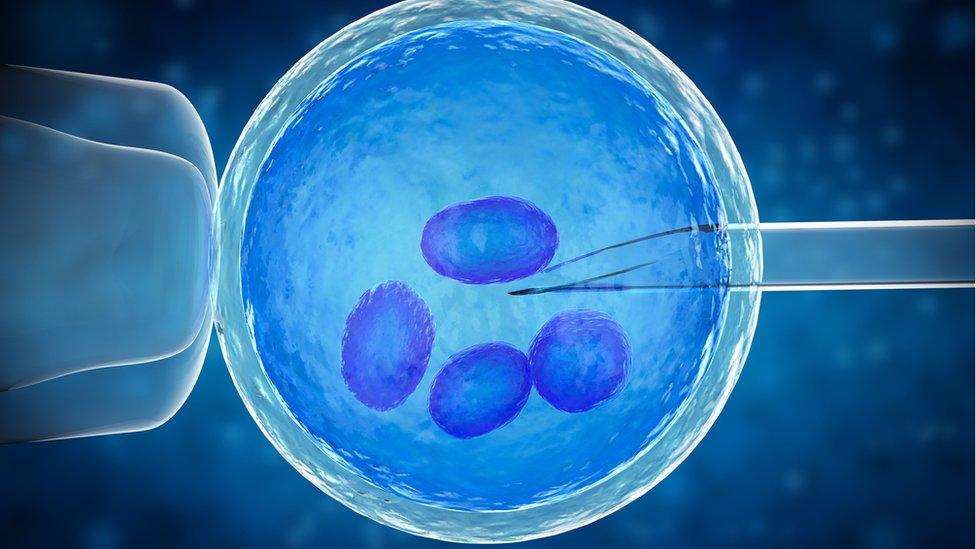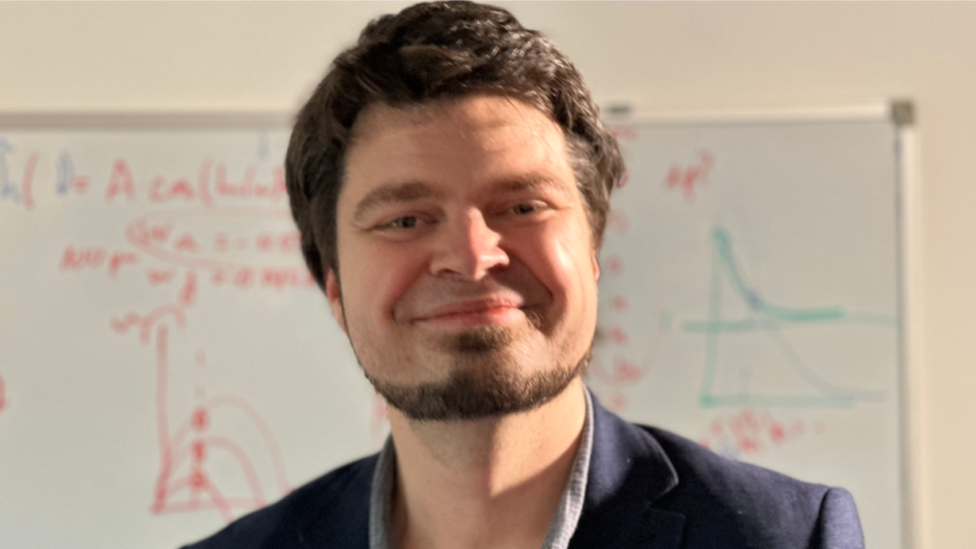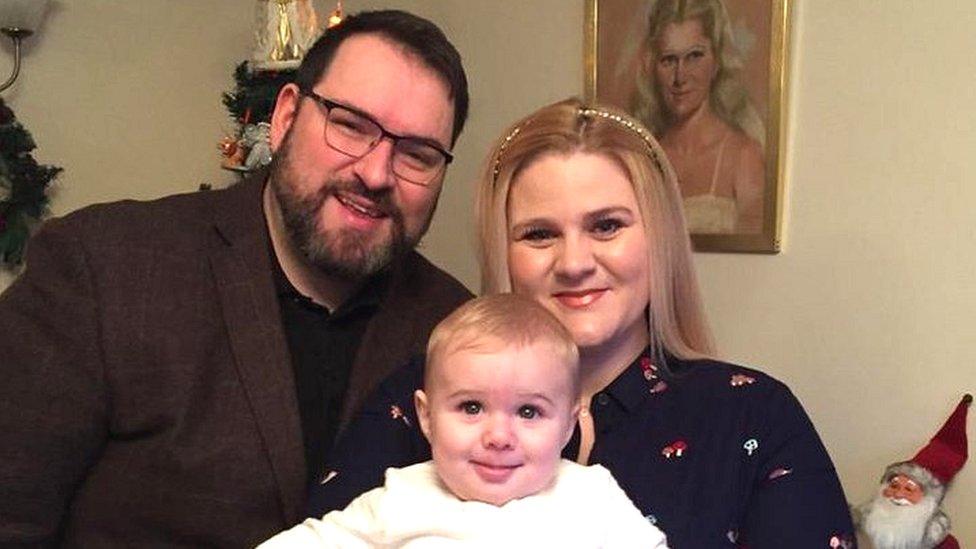Hopes for IVF boost from University of Warwick maths doctor's idea
- Published

Doctors have to collect eggs from women for IVF cycles
IVF remains a difficult process that doesn't guarantee a successful pregnancy but every year there are new discoveries to try and improve the odds for couples - and the latest such discovery is from the University of Warwick.
But the person behind it isn't a doctor or a surgeon, he's a mathematician - Dr Radu Cimpeanu.
At the start of the IVF process, doctors need to collect eggs to create the embryos. This involves a procedure where a needle is passed through the vagina and into an ovary, guided by ultrasound.
Patients are sedated and the process takes about 20-30 minutes.
It's a difficult and delicate task and the chances of successfully recovering an undamaged egg are about 30%, though that varies from patient to patient.
At the very tip of the needle, doctors are aspirating - or sucking up - the fluid inside the follicle where the egg is.

Dr Radu Cimpeanu has redesigned the needle used to collect the eggs for IVF
They actually suck out the fluid (and hopefully the egg) twice - sucking the fluid out then pushing fluid back, then sucking out the fluid again.
The point is to increase the chances of retrieving the egg but they also risk damaging it in the process and a damaged egg cannot be used for IVF.
Dr Cimpeanu's approach is to do the exact opposite.
He redesigned the needle so at the tip the doctors aren't sucking but rather pushing fluid gently into the follicle.
This catches the egg in a swirling motion and guides it up the tip of the needle for collection.
Chatting to me about his invention, Dr Cimpeanu compared the two approaches to a ship on the sea travelling home.
In one, the ship is gently guided back to harbour by a lighthouse, in the other it crashes about in a storm and may arrive at port damaged.
In mathematical models produced by Dr Cimpeanu, you can see the difference in the two processes and inside the computer the new needle retrieves undamaged eggs 100% of the time.

The needle has so far only been used on horses and cattle
We now have some indications of how the needle will work in the real world.
It has so far not been approved for use in people but is being used in IVF for horses and cattle.
In veterinary trials, the new needle retrieved undamaged eggs 80% of the time, an improvement over the existing approach.
So what does this potentially mean for real people if the new needle is used in IVF?
Well, the potential is to harvest more good quality eggs in a single procedure.
Because the new needle is not radically different to the existing one, apart from the very tip, the team hope it could be approved for medical use fairly quickly once a manufacturer is found.
New research, published in the journal Human Reproduction in the summer, revealed the chance of becoming pregnant naturally after having an IVF baby is quite high, about one in five.
However it remains a difficult process with no guarantees but this discovery may one day help improve the odds for those going through it.

Follow BBC West Midlands on Facebook, external, X, external and Instagram, external. Send your story ideas to: newsonline.westmidlands@bbc.co.uk, external
Related topics
- Published21 June 2023

- Published28 February 2022
